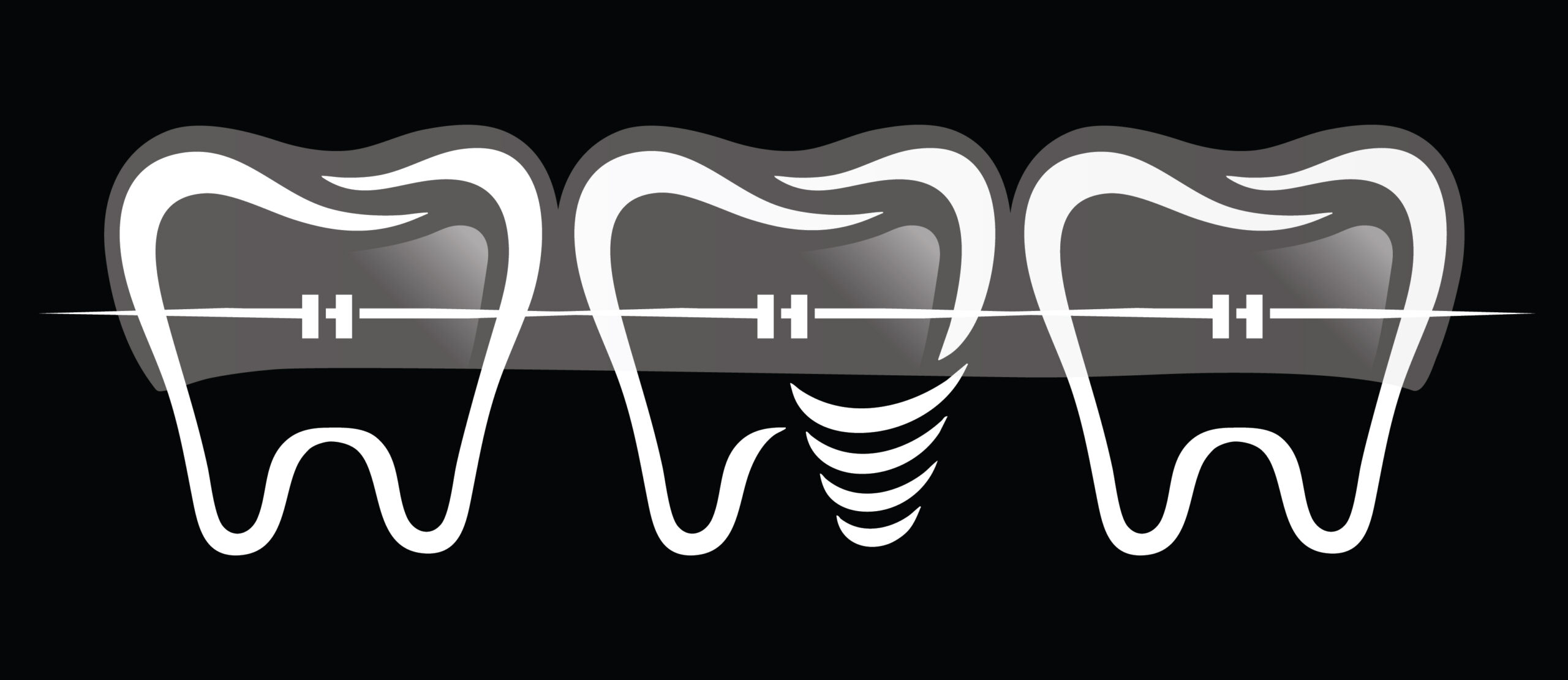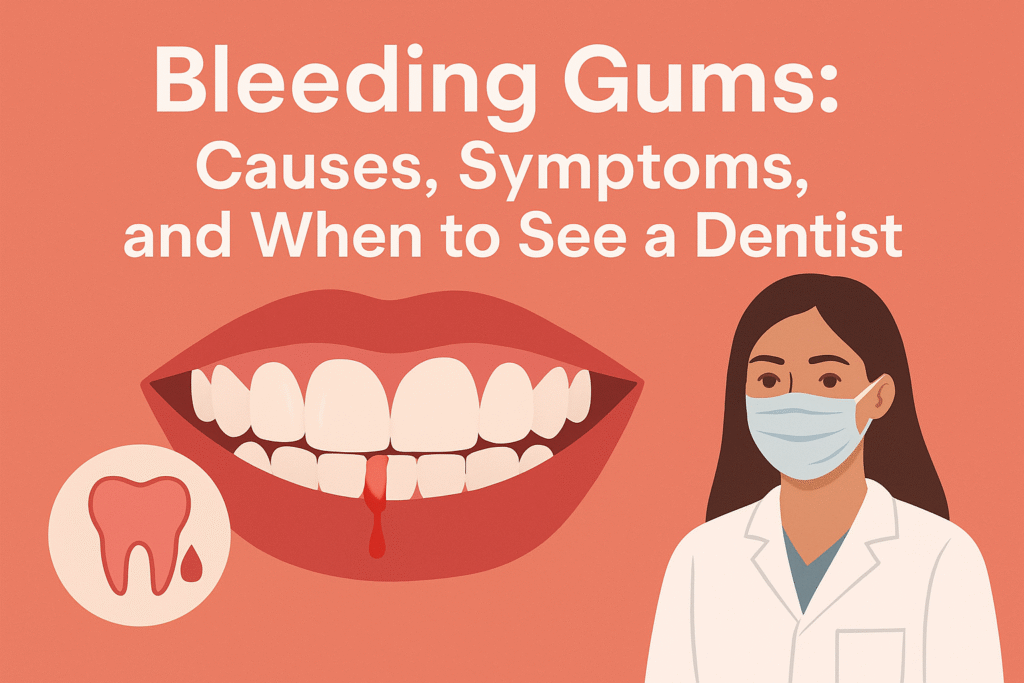Bleeding gums are one of the most common oral health issues that people tend to ignore—often brushing it off as a minor problem. However, bleeding while brushing or flossing is not normal and can be an early warning sign of underlying dental or gum disease. Understanding the causes, symptoms, and when to seek professional help can make all the difference in maintaining a healthy smile.
As the Best Dentist in Mahalunge, Dr. Amruta Motarwar emphasizes that gum health is just as important as tooth health. Healthy gums provide the foundation for a strong, beautiful smile and help prevent long-term dental complications.
Common Causes of Bleeding Gums
Several factors can contribute to gum bleeding. Here are some of the most frequent causes:
1. Poor Oral Hygiene
When plaque—a sticky film of bacteria—builds up on your teeth and gum line, it can irritate the gums, leading to inflammation and bleeding. If not removed, this plaque can harden into tartar, worsening the irritation and increasing your risk of gum disease.
2. Gingivitis
Gingivitis is the earliest stage of gum disease and one of the leading causes of bleeding gums. Symptoms include redness, swelling, and tenderness in the gums. The good news is that gingivitis is reversible with proper dental care and professional cleaning.
3. Periodontitis
If gingivitis is left untreated, it can progress to periodontitis—a more serious gum infection that can damage the soft tissue and bone supporting your teeth. This condition requires prompt professional treatment to prevent tooth loss.
4. Brushing or Flossing Too Hard
Sometimes, bleeding gums may simply result from brushing too aggressively or using a hard-bristled toothbrush. Gentle brushing with a soft-bristled brush and proper technique can prevent trauma to the gums.
5. Vitamin Deficiencies
Deficiencies in Vitamin C and Vitamin K can cause your gums to bleed more easily. A balanced diet rich in fruits, vegetables, and leafy greens supports overall gum health.
6. Hormonal Changes
Hormonal fluctuations during pregnancy, menstruation, or menopause can make gums more sensitive and prone to bleeding. This is commonly referred to as “pregnancy gingivitis.”
7. Medications
Certain medications such as blood thinners, antihypertensives, or anticonvulsants may increase the risk of bleeding gums. Always inform your dentist about any medications you’re taking before your treatment.
Symptoms That Shouldn’t Be Ignored
Bleeding gums often appear alongside other symptoms. If you notice any of the following signs, it’s time to consult your dentist:
- Persistent bad breath
- Swollen or tender gums
- Gum recession (gums pulling away from the teeth)
- Loose or shifting teeth
- Pain while chewing
- Pus between teeth and gums
Ignoring these symptoms can allow gum disease to progress, leading to more complex dental problems.
When to See a Dentist
Occasional bleeding might not seem serious, but if the problem persists for more than a few days or worsens, it’s important to schedule a dental visit. Early diagnosis can prevent further damage to your gums and teeth.
Dr. Amruta Motarwar, known for providing expert Orthodontic Treatments in Mahalunge, advises her patients not to delay seeking help for bleeding gums. Professional cleaning, scaling, and root planing can effectively remove plaque and tartar buildup, restoring gum health and preventing complications.
Treatment Options for Bleeding Gums
The treatment for bleeding gums depends on the underlying cause. Here are some common approaches your dentist may recommend:
1. Professional Dental Cleaning
A thorough cleaning removes plaque and tartar buildup that regular brushing cannot. This helps reduce inflammation and bleeding.
2. Improved Oral Hygiene Routine
Brushing twice a day, flossing daily, and using an antibacterial mouthwash are key to preventing gum problems. Your dentist may also recommend switching to a softer toothbrush.
3. Scaling and Root Planing
For patients with early gum disease, a deep cleaning procedure known as scaling and root planing can be performed to clean below the gum line and promote healing.
4. Medication or Antimicrobial Mouthwash
In some cases, your dentist may prescribe antibiotics or antimicrobial mouth rinses to control bacterial infection and inflammation.
5. Lifestyle and Dietary Changes
Incorporating more Vitamin C and K into your diet, quitting smoking, and managing stress can greatly improve gum health and reduce bleeding.
How Orthodontic Care Relates to Gum Health
Did you know that misaligned teeth can contribute to bleeding gums? Crooked or crowded teeth create tight spaces that are difficult to clean, allowing plaque to accumulate and irritate the gums.
Dr. Amruta Motarwar offers advanced Orthodontic Treatments in Mahalunge to correct teeth alignment and improve oral hygiene accessibility. Straight teeth not only enhance your smile but also promote healthier gums by reducing the risk of plaque buildup and gum inflammation.
Preventive Tips for Healthy Gums
Here are a few simple steps you can take to maintain gum health:
- Brush your teeth gently twice daily with a soft-bristled toothbrush.
- Floss regularly to remove food particles and plaque from between teeth.
- Rinse with an antibacterial mouthwash.
- Avoid smoking or using tobacco products.
- Visit your dentist regularly for check-ups and cleanings.
- Eat a balanced diet rich in vitamins and minerals.
Conclusion
Bleeding gums are not something to be ignored—they’re often the body’s way of signaling that something isn’t right. Whether it’s early-stage gingivitis or more advanced periodontitis, prompt care and preventive measures can help you restore healthy gums and a confident smile.
If you’re experiencing persistent bleeding gums or any other oral discomfort, it’s time to consult the Best Dentist in Mahalunge, Dr. Amruta Motarwar. With her expertise in dental and orthodontic care, she provides personalized treatment plans to ensure lasting oral health and a radiant smile.


 Select an element to maximize. Press ESC to cancel.
Select an element to maximize. Press ESC to cancel.